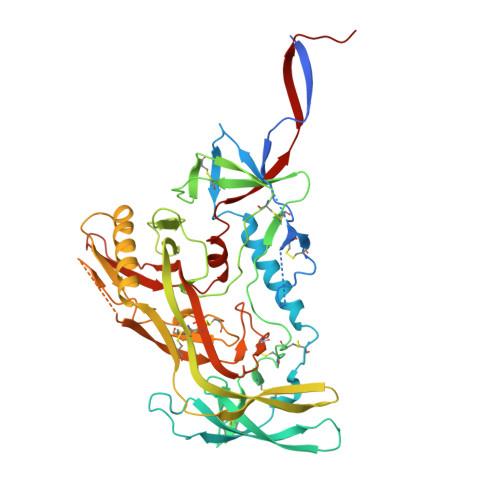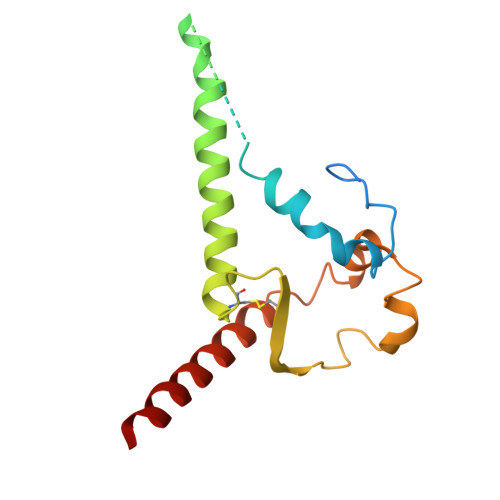Acquisition of quaternary trimer interaction as a key step in the lineage maturation of a broad and potent HIV-1 neutralizing antibody.
Liu, Q., Parsons, R.J., Wiehe, K., Edwards, R.J., Saunders, K.O., Zhang, P., Miao, H., Tilahun, K., Jones, J., Chen, Y., Hora, B., Williams, W.B., Easterhoff, D., Huang, X., Janowska, K., Mansouri, K., Haynes, B.F., Acharya, P., Lusso, P.(2025) Structure 33: 1325-1336.e5
- PubMed: 40412376
- DOI: https://doi.org/10.1016/j.str.2025.04.020
- Primary Citation of Related Structures:
9D7G, 9D7H, 9D7I, 9D7O, 9D7P - PubMed Abstract:
Although most broadly neutralizing antibodies (bNAbs) specific for the CD4-binding site (CD4-BS) of HIV-1 interact with a single gp120 protomer, a few mimic the quaternary binding mode of CD4, making contact with a second protomer through elongated heavy chain framework 3 (FRH3) or complementarity-determining region 1 (CDRH1) loops. Here, we show that a CDRH3-dominated anti-CD4-BS bNAb, CH103, establishes quaternary interaction despite regular-length FRH3 and CDRH1. This quaternary interaction is critical for neutralization and is primarily mediated by two FRH3 acidic residues that were sequentially acquired and subjected to strong positive selection during CH103 maturation. Cryoelectron microscopy (cryo-EM) structures confirmed the role of the two FRH3 acidic residues in mediating quaternary contact and demonstrated that CH103 reaches the adjacent gp120 protomer by virtue of its unique angle of approach. Thus, the acquisition of quaternary interaction may constitute a key step in the lineage maturation of a broad and potent HIV-1 neutralizing antibody.
- Laboratory of Immunoregulation, National Institute of Allergy and Infectious Diseases, National Institutes of Health, Bethesda, MD 20892, USA. Electronic address: liu_qingbo@outlook.com.
Organizational Affiliation:




















